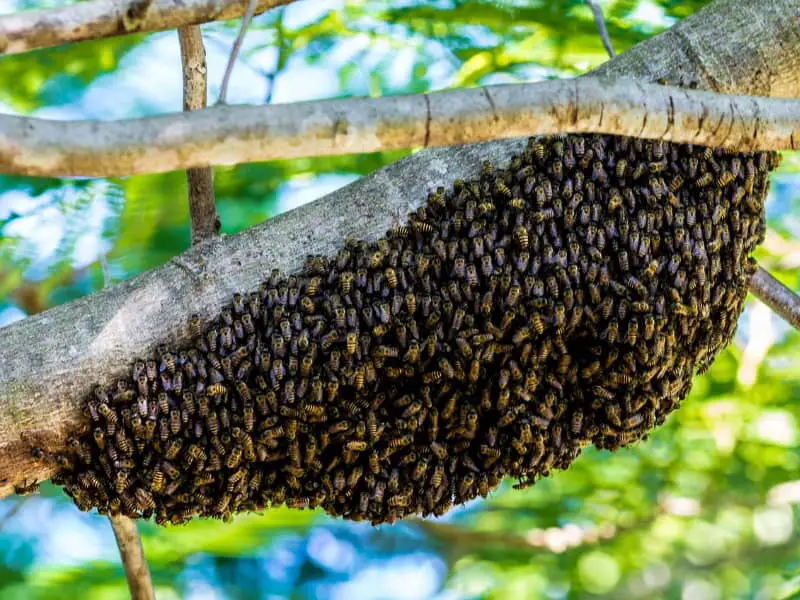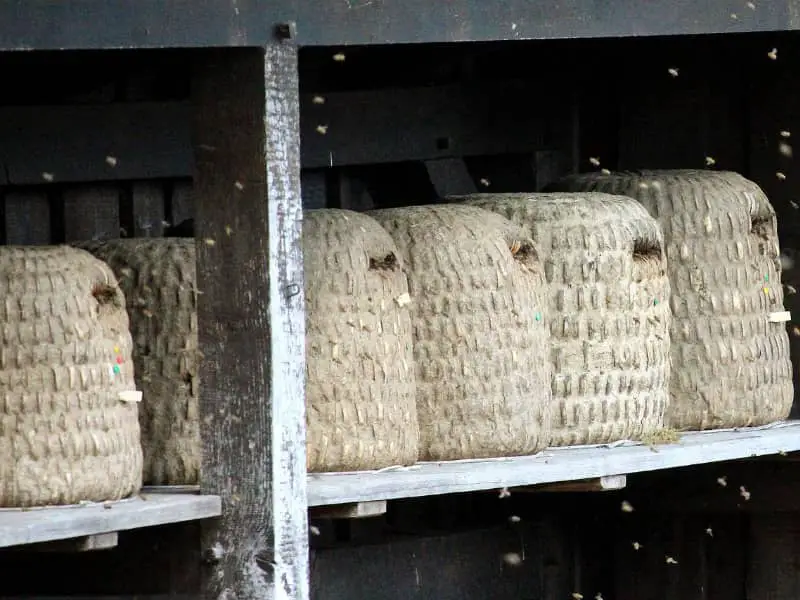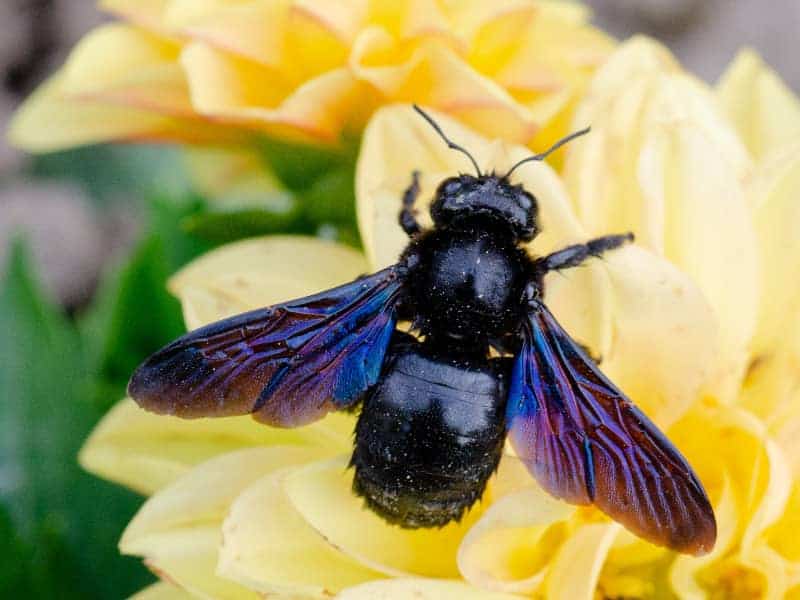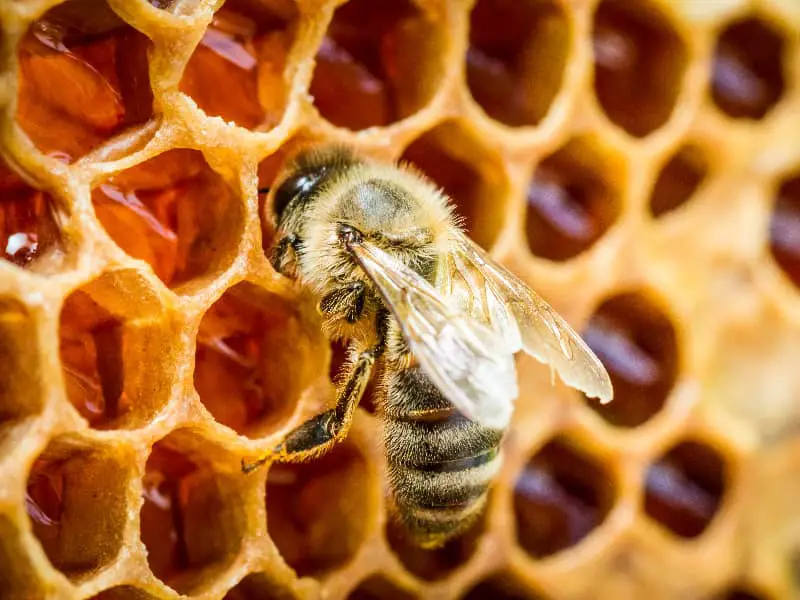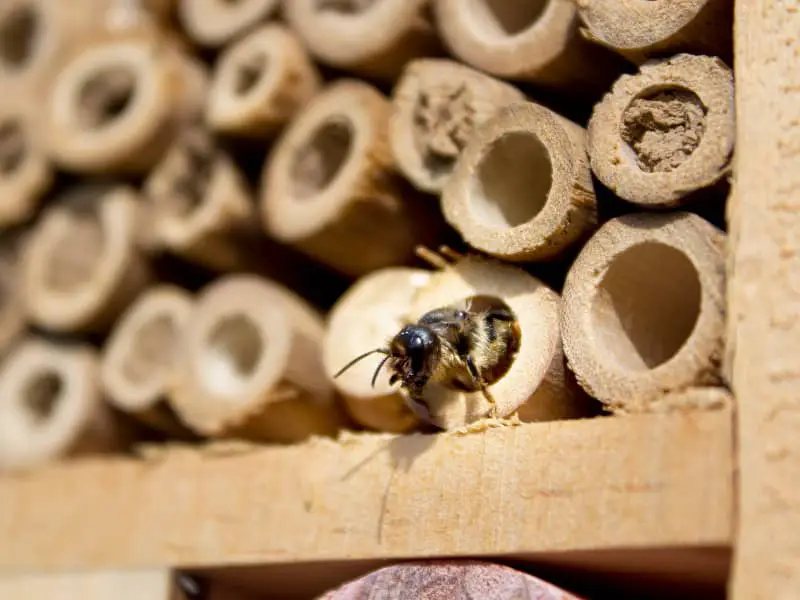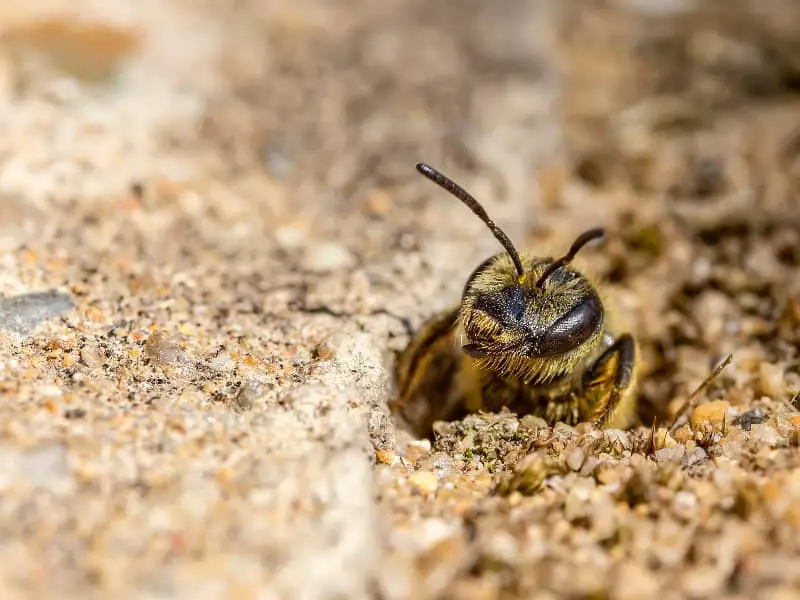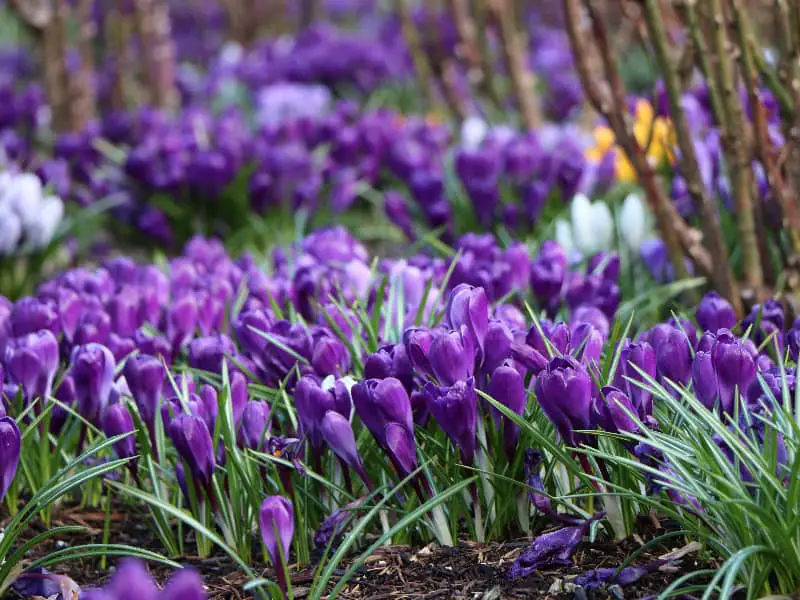
Bee friendly early bloomers
Welcome to the wonderful world of bee-friendly early bloomers! This blog post dives deep into the topic to highlight the importance of these little heroes to our buzzing friends. From choosing the best early bloomers to care tips, you'll find everything you need to know here.
- Bee friendly early bloomers
- Importance of bee-friendly early bloomers
- Why bees are so important
- What are bee-friendly early bloomers?
- The top 10 bee-friendly early bloomers
- How to properly plant bee-friendly early bloomers
- Care for early bloomers
- The role of flower color in early bloomers
- Regional differences
- Alternatives to bee-friendly early bloomers
- Useful tips for beginners
- Bee friendly early bloomers for balcony and terrace
- Conclusion: bee-friendly early bloomers
Importance of bee-friendly early bloomers
Bee-friendly early bloomers are not only a beautiful sight in your garden, but they also serve an important ecological function. In early spring, when most plants are still dormant, these early bloomers provide bees with important food in the form of pollen and nectar.
The bees are hungry after the long winter and in search of food to help them strengthen their colonies. At a time when bee populations are declining and humans are interfering more and more with natural ecosystems, planting bee-friendly early bloomers is a small but valuable contribution to nature conservation.
Why early bloomers in particular are important
Early bloomers are the first plants to bloom in the year, often when there is still snow. Their early appearance is particularly important for bees, as they are in desperate need of food after hibernation. These early flowers provide a vital food source and help bees recover from the rigors of winter. They also form the basis for a successful breeding season and thus for the future of the bee colony.
What awaits the reader in the blogpost
In this blog post, you'll learn everything you need to know about bee-friendly early bloomers. From the importance of these plants to the ecosystem, to the best species to plant in your garden or on your balcony, to care and planting tips. Even if you're a complete beginner, this blog post will provide you with valuable insights and practical guidance to create your own bee-friendly garden.
Why bees are so important
Bees are more than just the producers of our sweet honey. They play a key role in ecosystems and are indispensable to human civilization.
Pollination and ecosystem
Bees are excellent pollinators and therefore invaluable for agriculture and natural ecosystems. By transporting pollen from one flower to the next, they not only enable the reproduction of many plant species, but also contribute to biodiversity. Around one-third of the food produced worldwide depends directly or indirectly on pollination by bees. From fruits and vegetables to coffee and cocoa, many of the foods we consume every day would not be possible without the work of bees.
Threat to bees
Unfortunately, bees are threatened worldwide. Pesticides, habitat loss and climate change are just some of the factors leading to the decline of bee populations. A decline in bees has far-reaching implications, not only for the natural environment, but also for agriculture and ultimately for us humans. In this context, the importance of bee-friendly early bloomers becomes even more important. They serve as an early food source and thus provide important support for the bees.
Benefit for the human being
Bees are not only essential for pollination, they also produce honey, wax and other products used in human nutrition and even medicine. The importance of bees to our society therefore cannot be overstated. By planting bee-friendly early bloomers, you too can help protect these indispensable insects.
What are bee-friendly early bloomers?
Spring is the time of renewal and blossoming. But did you know that some plants bloom even before spring really gets going? These are the so-called early bloomers, and they have a very special meaning.
Definition and examples
Early bloomers are plants that bloom as early as late winter or early spring. They are often the first splashes of color in the still barren garden and signal the beginning of a new growing season. Well-known examples of bee-friendly early bloomers include crocuses, winter bulbs and snowdrops. These plants are not only beautiful to look at, but also have ecological benefits, especially for our bee friends.
Why they are important for bees
For bees, early bloomers are like a feast after a long period of fasting. With many other plants not blooming until now, early bloomers are often the only food sources available. They provide abundant pollen and nectar, which bees need for energy and to raise brood. By pollinating these early bloomers, bees also help plants reproduce, which in turn strengthens the ecosystem.
Ecological advantages
In addition to directly supporting bees, bee-friendly early bloomers also contribute to a healthy and diverse ecosystem. They promote soil health, provide habitat for other animals and contribute to biodiversity. Therefore, planting bee-friendly early bloomers is not only a contribution to the protection of bees, but also an important element in the preservation of biodiversity.
The top 10 bee-friendly early bloomers
There are numerous plants that are considered early bloomers and are particularly bee-friendly. But which are the best? Here comes our top 10 list of plants you should consider if you want to support bees in your garden.
Crocus
Crocuses are one of the first flowers to appear in spring, and they are a real magnet for bees. With their bright colors and high pollen and nectar content, they provide bees with a valuable food source.
Winterling
Winterling is one of the first plants that bloom already in late winter. It is very hardy and grows even in shady areas. Its yellow flowers are extremely attractive to bees.
Snowdrops
Snowdrops are often there when the snow has not yet completely disappeared. They not only provide a pretty look, but also an important food source for early-active bees.
Christmas rose
The Christmas rose also offers attractive food for bees with its dark, almost black-looking flowers. It is particularly suitable for shady and semi-shady locations.
Primrose
The primrose is not only a feast for the eyes of humans. Its bright yellow, red or purple flowers also attract bees and provide abundant nectar.
Lungwort
Lungwort is especially suitable for forest gardens and magically attracts bees with its purple and pink flowers.
Hazelnut
Not only flowering plants are important; some shrubs like the hazelnut also provide valuable pollen. The hazelnut bush blooms very early in the year and is an important source of pollen.
Coltsfoot
Coltsfoot is one of the first wild plants to bloom in spring. It often grows along roadsides and its yellow flowers are a welcome food source for bees.
Wood anemone
Wood anemone blooms in early spring and attracts bees with its white flowers. It prefers semi-shady to shady places and is therefore ideal for woodland gardens.
Violets
Violets are not only pretty, but also useful. Their purple flowers are rich in nectar and therefore attract many bees.
How to properly plant bee-friendly early bloomers
So you've decided to add a bee-friendly touch to your garden. That's an excellent decision! But how do you actually plant early bloomers properly? Here are some tips.
Site selection
Choosing the right location is critical to the growth of your early bloomers. Each plant has its own preferences, but in general, many early bloomers prefer sunny to partial shade locations. Be sure to choose a location so that the plants receive adequate light, but are protected from strong midday sun. A location near shrubs or bushes can also be useful to protect the plants from wind and provide additional shade.
Soil condition
Early bloomers are usually not very demanding when it comes to soil, but good soil preparation can make all the difference. A well-drained, nutrient-rich soil is ideal. Waterlogging should be avoided, as many early bloomers are sensitive to too much moisture. Before planting, it may be a good idea to enrich the soil with compost to improve nutrient supply.
Planting time
The ideal time for planting varies depending on the type of early bloomers. Many bulb flowers such as crocuses or snowdrops are planted in the fall so they can bloom the next spring. Other plants, such as primroses, can also be set in the spring. Be sure to consider the specific requirements of each type of plant and plant it at the right time.
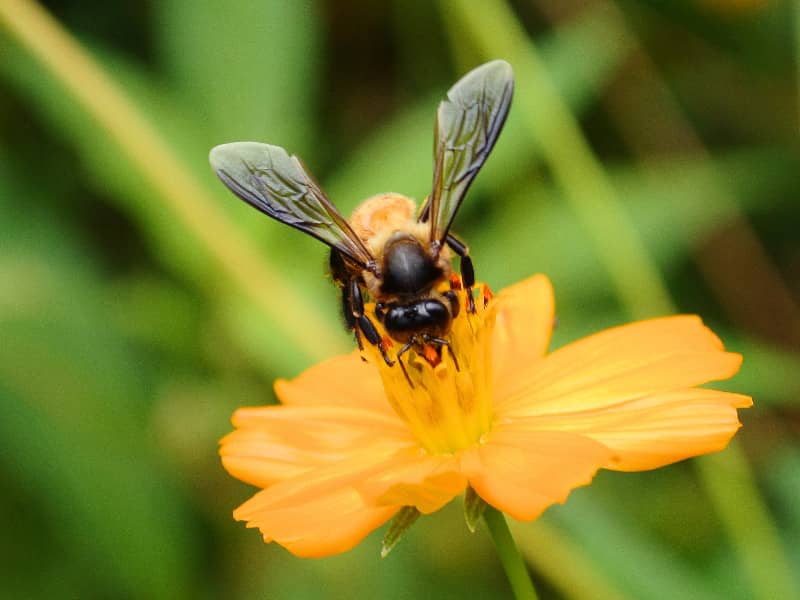
Care for early bloomers
After you plant your early bloomers, it's important to take good care of them so they can thrive and provide food for bees. Here are some important tips for caring for your bee-friendly early bloomers.
Watering and fertilizing
Early bloomers are usually relatively frugal, but you should still follow some basic rules when watering and fertilizing. Water the plants regularly, but avoid waterlogging. As a rule, it is better to water less frequently, but thoroughly. Exceptions are extremely hot and dry periods; then more frequent watering is necessary. As for fertilization, it is usually sufficient to work compost into the soil before planting. Chemical fertilizers are usually not necessary and may even be harmful to bees.
Cutting and transplanting
Cutting early bloomers is not necessary in the majority of cases, but can be beneficial for some species such as shrubs. Removing faded flowers can stimulate the plant to produce more flowers. If the early bloomers grow too large over the years or do not develop as you had envisioned, transplanting may be appropriate. However, this should only be done after the flowering period, so as not to stress the plant unnecessarily.
Diseases and pests
Like all plants, early bloomers can be affected by diseases and pests. Common problems are fungal infections or pests such as aphids. When controlling them, however, you should make sure to choose bee-friendly methods. Chemical pesticides are usually not a good option, as they can also harm bees. Instead, you can use natural remedies like neem oil or homemade insecticides made from garlic and chili.
The role of flower color in early bloomers
The color of the flowers in your garden plays not only an aesthetic role, but also has a functional significance, especially when it comes to bees. Different colors affect bees differently and can also influence the efficiency of pollination.
Perception of the bees
It is fascinating that bees see the world differently than we humans do. While we see in the visible spectrum from red to violet, bees are able to perceive ultraviolet colors. However, they are color blind to red. Therefore, patterns and colors that are invisible to us can be very attractive to bees.
Colors that attract bees
Since bees cannot see red hues, they are more attracted to flowers in shades of yellow, blue or purple. Studies have shown that flowers in these color spectrums are often richer in nectar and pollen, making them especially attractive to bees. So if you consider these colors when choosing plants, you increase the chances of attracting more bees to your garden.
Influence on pollination
The color of flowers can also influence the efficiency of pollination. Flowers that are visible and attractive to bees are visited more often, increasing the likelihood of successful pollination. Likewise, some plants can signal whether or not they have already been pollinated by changing color, allowing bees to use their energy more efficiently.
So choosing the right flower colors is not only a matter of taste, but can also have a significant impact on the bee-friendliness of your garden. With the right mix of colors and plant species, you can create a garden that is a paradise for both bees and you.
Regional differences
Before you start planting your bee-friendly garden, it's important to consider regional differences. These can have a big impact on which plants do well in your garden and which are particularly attractive to the bees in your area.
Climatic conditions
In Germany, climatic conditions vary considerably depending on the region. While it is rather maritime in the north and continental in the south, climatic conditions can differ greatly even within one region. Therefore, it is important to select plants that suit the specific conditions in your region. Rainfall, temperature and soil conditions are just some of the factors you should consider.
Native early bloomers
Native early bloomers are generally an excellent choice when it comes to creating a bee-friendly garden. These plants are adapted to local conditions and often provide a rich food source for bees. Further, they promote biodiversity and may even attract specific pollinators found only in certain regions.
Plants for special regions
Some early bloomers are particularly well suited to certain regions. In alpine or mountainous areas, for example, plants such as the alpine crocus or snowdrop might thrive particularly well. In coastal regions, plants that are salt tolerant might be a better choice. By choosing plants that are appropriate for your particular region, you not only increase the likelihood of your garden succeeding, but you also help preserve the local flora and fauna.
Alternatives to bee-friendly early bloomers
Although early bloomers are an excellent way to provide food for bees in the spring, there are other plant species that can serve as supplemental or alternative food sources. These are especially useful if you want to create a year-round bee-friendly garden.
Shrubs and trees
In addition to flowering spring plants, shrubs and trees can also be an important food source for bees. Examples are cornelian cherry, willows or fruit trees such as apple and cherry. These provide not only flowers, but also shelter and habitat for bees and other insects. Shrubs and trees often bloom over a long period of time and can therefore provide a constant source of food.
Herbs
Herbs such as lavender, rosemary and thyme are not only useful in the kitchen, but also attract bees and other pollinators. Many herbs are perennial and thus offer blooms over an extended period of time. Because they are also often hardy and easy to care for, they are an excellent addition to any bee-friendly garden.
Perennials
Perennials such as catmint, coneflower, or splendid chart offer another way to make your garden bee-friendly. They often bloom for several weeks or months, providing a sustainable food source for bees. What's more, they're usually low-maintenance, too, and can come back year after year.
By incorporating shrubs, trees, herbs and perennials into your garden, you can create a diverse and year-round food source for bees. These plants are not only an excellent complement to early bloomers, but also expand the biodiversity and aesthetic variety of your garden.
Useful tips for beginners
If you're just starting to grow your own bee-friendly garden, the wealth of information and options can be overwhelming at first. In this section, you'll find some basic tips to help you get started.
Plant selection
Choosing the right plants is critical to creating a successful, bee-friendly garden. Focus first on native early bloomers and supplement them with shrubs, trees and perennials that thrive in your area. Also consider what colors and shapes are attractive to bees. Take into account the factors already discussed, such as soil quality, climate and location.
First steps
Before you start planting, careful planning is essential. Make a sketch of your garden to determine the best locations for the various plants. Consider how you will design your garden to be both aesthetically pleasing and functional. Once you have a plan, you can begin preparing the soil and finally plant the plants.
Avoid common mistakes
There are some common mistakes that beginners can make that are easy to avoid. One of the most common is trying too many different types of plants at once. Not only can this be overwhelming, but it can also make care more complicated. Another mistake is not watering plants regularly or fertilizing them incorrectly. So find out thoroughly beforehand what the needs of your chosen plants are.
Bee friendly early bloomers for balcony and terrace
Not everyone has a large garden at their disposal, but that shouldn't stop you from creating a bee-friendly area. Balconies and patios are also great places to provide a food source for bees. Here are some tips for making the most of limited space.
Suitable plants
When space is limited, the selection of the right plants is especially important. Small but efficient early bloomers like crocuses, primroses or horned violets are ideal for pots or boxes. Herbs such as lavender and thyme are also good because they do not require much space and can grow well in pots.
Space optimization
When space is limited, creativity is key. Use hanging planters, vertical planter walls or multi-level planter shelves to make the most of the space. Using planter boxes on railings can also be helpful. However, always keep in mind that plants must receive enough light and water to thrive.
Care tips
Care of plants on a balcony or terrace differs in some respects from the garden. Because plants in pots and boxes have less soil available, regular fertilization is often necessary. Also make sure planters have good drainage to keep plants from standing in water. Check the plants regularly for pests and diseases, as these can spread quickly in a confined space.
By choosing and placing plants wisely and taking proper care of them, you can create a bee-friendly paradise on your balcony or patio. In this way, you not only contribute to the preservation of bees, but also have the added bonus of enjoying a beautifully blooming outdoor area.
Conclusion: bee-friendly early bloomers
A bee-friendly garden or balcony is more than just a pretty sight; it plays a crucial role in the ecological balance and protection of bees, which are threatened in many regions. Through the right selection and care of early bloomers, every individual can make a valuable contribution to the preservation of these important pollinators.
Relevance of the bee-friendly early bloomers
The importance of early bloomers cannot be overstated. They provide bees with an important source of food after the winter and help them to strengthen their colonies. This in turn has a positive impact on the pollination of crops and thus on food production. By planting bee-friendly early bloomers, you not only create an aesthetically pleasing space, but also actively support biodiversity and nature conservation.
The contribution of each individual
Everyone can make a difference, whether by planting a complete bee-friendly garden or by consciously choosing a few plants for the balcony. It doesn't take huge tracts of land or deep expertise to make a contribution. With a little planning, proper plant selection and a few basic care tips, anyone can create an oasis for bees.
Comprehensive information and tips
In this blog post, we've provided a wealth of information and practical tips to help you get started. From choosing the best early bloomers and optimal planting techniques to care tips for different locations, we've covered a wide range to make it as easy as possible for you to get started.
Call to action
After all, the most important step is the first. Creating a bee-friendly space is not only a contribution to environmental protection, but also an enrichment for your own life. The joy that comes from seeing a garden or balcony in bloom, the buzz of bees and the knowledge that you have done something good are priceless.
Closing words
Conservation of bees and other pollinators is a global challenge that requires collective effort. By implementing the tips and methods presented in this blog post, each of us can take a small but significant step in the right direction. So, why wait? Start now and make your garden or balcony a paradise for bees!
Author

-
Garden animal - A life with nature
Welcome to my animal blog! My name is Dirk and I am happy to take you on my journey through the fascinating world of animals and gardening.
Born 54 years ago, I have had an insatiable curiosity for the animal world around me since childhood. Although I have moved professionally in other industries, my true passion has always been animals and nature. It is remarkable how a small garden has become such an important part of my life.
Many of my fondest memories are associated with the animals that share our home. Whether it's the curious squirrels that scurry across the trees in the morning, the colorful variety of birds that visit our feeders, or the busy bees and butterflies that pollinate our flowers, every moment with them is invaluable to me.
This blog is my contribution to share my experiences, discoveries and insights with like-minded people. Here I will share stories of unforgettable encounters with animals, give tips on gardening and creating wildlife-friendly habitats, and take you on my journeys through nature.
Thank you so much for being here!
Cordial,
Dirk aka garden animal
Last posts
- 27. February 2024PetsVeganes Hundefutter – Grün und Gesund?
- 18. January 2024ChickensOregano für Hühner
- November 27, 2023HamsterDiurnal hamsters
- November 24, 2023HamsterHamster hammock

